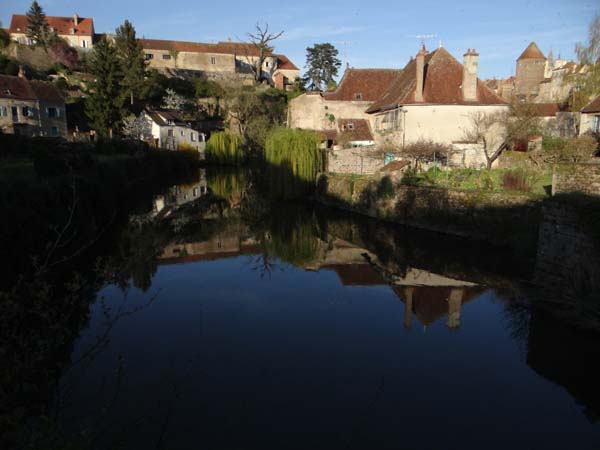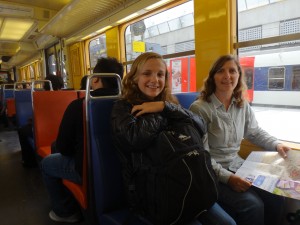After only a week in this city, it is a bit presumptuous to summarize it, but this is my web site, so I will presume anyway.
City of Angels Bangkok is a bit of paradise. Its Thai name (Krung Thep Mahanakhon Amon Rattanakosin Mahinthara Ayuthaya Mahadilok Phop Noppharat Ratchathani Burirom Udomratchaniwet Mahasathan Amon Piman Awatan Sathit Sakkathattiya Witsanukam Prasit (กรุงเทพมหานคร อมรรัตนโกสินทร์ มหินทรายุธยามหาดิลก ภพนพรัตน์ ราชธานีบุรีรมย์ อุดมราชนิเวศน์ มหาสถาน อมรพิมาน อวตารสถิต สักกะทัตติยะ วิษณุกรรมประสิทธิ์)) designates it the City of Angels, among other things. I think you have to look a bit harder these days for its heavenly virtues, what with 20 million denizens in the metropolitan area, but it is still there.
Motorcycles There are lots of motorcycles plying the streets of town. That eases congestion a bit. It is interesting to watch as they weave through all the cars at traffic signals so that the first several dozen vehicles at any intersection is a mass of cycles. In Spain, we were annoyed by the way folks adjusted the exhaust systems of their motorbikes so that they sounded like hoards of angry wasps. In Bangkok, the motorcycles are nice and quiet. Much more pleasant.
Clothing Even in the hot, humid days of summer, Bangkokians wear long pants, even jeans, when wandering about the city. The shorts-wearers are tourists. If ever there was a place that deserved a more lenient dress code, this is it.
Bilinguality Bangkok has language issues. Much signage is in both Thai and American English. But few of the Thais we met are comfortable with spoken English. On one hand they are proud of their heritage and language. On the other hand, they are inveterate shoppers and technology users, and brands and the Internet are primarily English-based. We met school children at tourist sites whose assignment was to interview Americans. We are easy enough to pick out of the crowd and they had a set list of questions. I sensed that most of our answers were not understood, but it was a start.
Traffic There is lots of traffic.
Public Transport The public transport is not as robust as this visitor would like. They have one underground metro line (MRT), two elevated “SkyTrain” (BTS) lines, one bus rapid transit (BRT) line, and ferries that ply the river. We used all of them but it can take a long time to get between points, and a lot of the city is only served by a regular (complicated and non-English) bus system. And the various systems do not have integrated ticketing or schedules. But at least they are air conditioned, which can be wonderful after a long walk from some city destination. Our flat is located at the Wat Pariwat BRT station, so at least it was convenient for us to enter the system.
Con Artists Some of the cons in Bangkok are quite famous. One of these is that an individual outside the Grand Palace will tell visitors that the Palace is closed due to a visiting dignitary, and wouldn’t you like to take a tuk-tuk ride to see other sites while waiting for it to re-open. We encountered just such an artist, dressed as a policeman (quite possibly a real policeman). We decided that we would enjoy the con since there is little downside. We got a cheap (40 baht/ $1.50) tuk-tuk ride through the government part of the city (administrative departments, king’s palace, etc.), saw a less-visited, but still interesting, temple, and then sat in air conditioned comfort for 10-15 minutes while a salesman tried to tell us we needed to buy more stuff to stick in our luggage. Not very convincing, and not very painful.
Shopping Bangkok is big on shopping. It has several of the largest malls in Asia. The weekend market at Chatuchak has thousands (!) of little shops that add to the commercial mix. While we were not in a buying mood due to our limited budget and luggage space, we did do several of these just to experience the “culture.”
Carelessness It seems to be a cultural quirk that people don’t care overmuch about getting the details right. English signage is wonderfully fractured, even though the city has many thousands of proficient English speakers. There are typos everywhere and no one seems to do the transliteration from Thai to English in any sort of consistent way. A visitor cannot tell if that is due to thoughtful differences of opinion or just sloppiness.
King The king is obviously respected. Many shops proudly display a photo of him. There are many billboards honoring him. He is the ninth in his kingly line (Rama IX) and by far the longest reigning at 65 years. He is a presence in the city.
Heat The Thais point out that it is hot in the city, so I guess it is OK for visitors to note this as well. Daytime temperatures peak at around 90F with some humidity thrown in. It can be uncomfortable, but not unbearable. We look at Delhi’s upcoming 110F daytime highs with trepidation.
Pink Much to Eryn’s delight, Thailand is a pink country. Most taxis are pink. Many of the king’s official portraits have him dressed in pink shirt or jacket.


